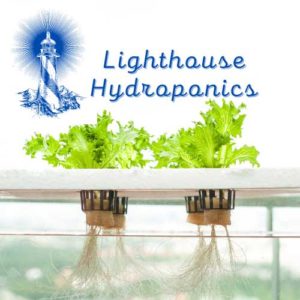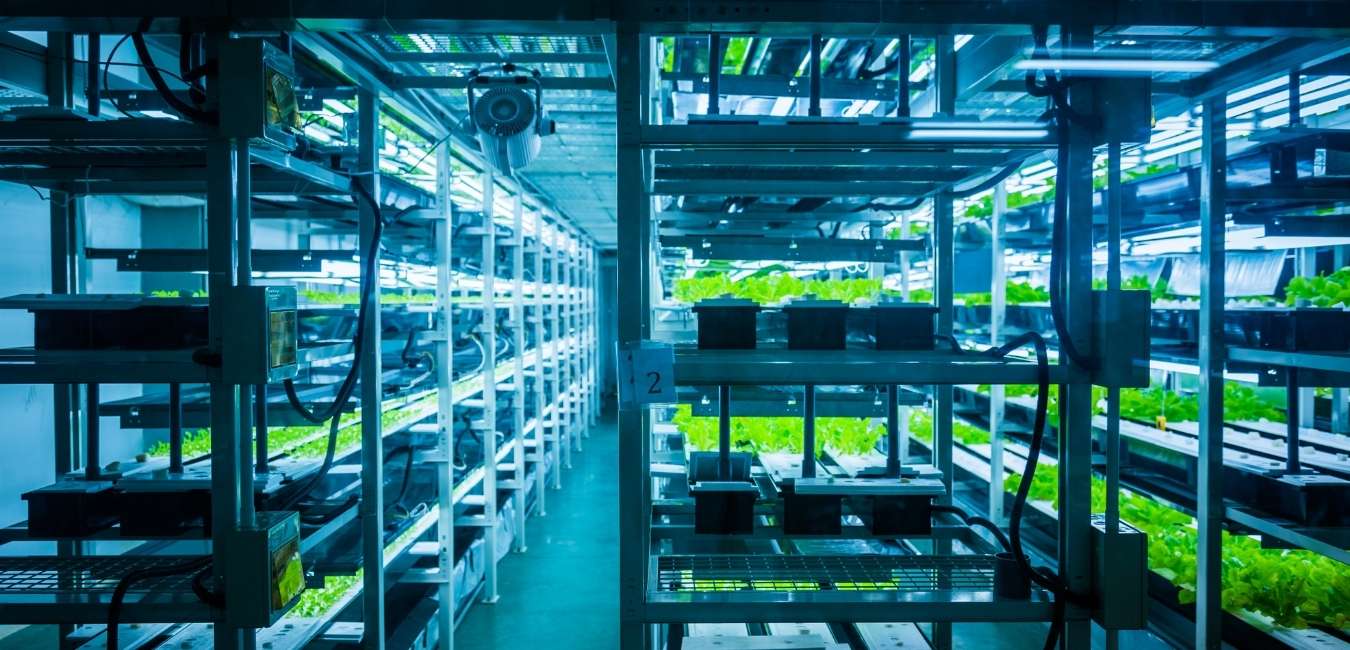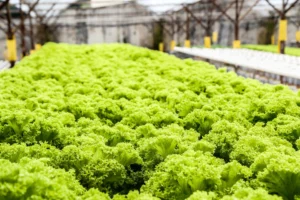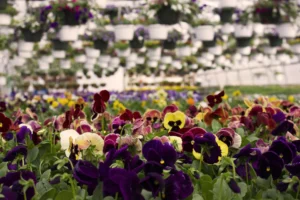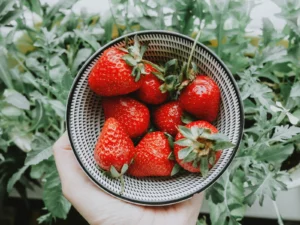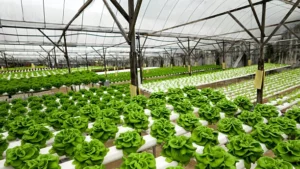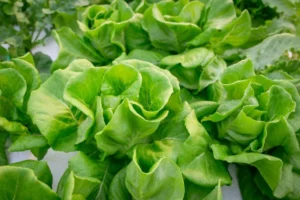Many people believe that hydroponics is a new method of farming, and consider the question “why is hydroponics bad?” as though they are considering a completely new area, but the truth is it has been around for thousands of years already. Just take a look at the floating gardens in China and the hanging gardens in Babylon.
Thanks to that concept William Frederick Gericke was able to create the hydroponics we know today. Like other plant nutritionists, Gericke has experienced a lot of criticisms while working on the idea that plants could grow in a solution of water and nutrients.
But that did not stop him from continuing to develop the concept. Finally, with Gericke’s experiment on tomatoes, his findings caught the attention of researchers in the U.S. and other countries across the world. And with that, scientists began to uncover the potential of hydroponics.
From then on, hydroponics has had an ongoing increase in popularity. In fact, many commercial farmers are now switching to hydroponics, and the number is estimated to skyrocket in the coming years. It’s no wonder as this advanced method of horticulture provides a variety of benefits.
Improved Resource Consumption
Low water consumption is one of the things that farmers enjoy.
Who would have thought that a method of farming that uses water could be water-saving? No one would believe that at first. But that’s true since modern hydroponic systems use recirculated, water-based, nutrient solutions.
Higher Yields
The yields with hydroponics are also higher and grow faster than with soil-based agriculture. Based on Hydroponic Food Production written by Dr. Howard M. Resh, this non-traditional method of farming leads to higher density planting.
What Are the Disadvantages of Hydroponics?
There is no perfect method of farming. Similarly to traditional soil-based techniques, hydroponics has some disadvantages or challenges you cannot afford to miss.
Below are some of the more prevalent:
Prone to Several Water-Borne Diseases
Plants grown in soil are at risk of fungi, viruses, bacteria, and nematodes (roundworms). Vegetables and fruits in a hydroponic system may be exposed to similar risks.
Since the water in most hydroponic systems is recirculated, hydroponically grown plants are also prone to diseases. After some time, the bacteria and fungus may start to grow in the system.
This requires the farmer to keep an open eye on the crops as would any farmer who wants to enjoy healthy produce.
Regular Monitoring and Maintenance
The presence of fungus in the water is one factor that affects the growth, quality, and yield of your leafy veggies.
As a hydroponic enthusiast, all of your efforts will go to waste when such a problem is left unattended for days and weeks.
The trick here is to monitor and keep your greenhouse clean at all times.
The challenge in this is that it could get exhausting and time-consuming. But your hard work and patience will pay off in abundance.
High Electricity Bills to Pay
Hydroponics can conserve water. If you have a big garden or farm, and you have been paying a hundred dollars on water bills, it may help.
But there are other devices you need to invest in when switching to hydroponics.
You need pumps to ensure proper ventilation and lights to provide the proper growth environment. This means your electricity bill may grow (depending of course on the size of your garden or greenhouse).
The secret here is to purchase energy-efficient appliances that are expert-recommended for your peace of mind.
It is Challenging to Learn
If you have been brought up into traditional farming and want to learn a new method like hydroponics, prepare yourself because it is not as easy as you expect.
I’d suggest you work with someone who has an in-depth background and experience to minimize and avoid costly mistakes.
Just remember:
Failure and mistakes are an important part of any learning process. So your perseverance and playful mindset will shortly turn your goals and your dreams into a reality.
Costly to Set Up and Build
A hydroponic greenhouse is expensive to establish. If you choose professional equipment – this alone requires a big sum of money right from the start. Other extra costs may include labor, maintenance, bills, and more.
It is a good business, though. You can expect quality yields every harvesting season. And bear in mind that soil-based greenhouses experience similar if not harder to handle challenges.
What Are Some Common Problems with Hydroponics?
Leaky System
A water leak is the number one concern for most hydroponic gardeners. Usually, they occur in or close to valves in the system when they get clogged, due to rising pressure.
However, with the advancement in knowledge and technology, this problem can easily be solved with both human and automatic alertness.
You as a gardener or farmer, need to make sure that every connection is secure and tight before you get started – when building or connecting your hydroponic system, and throughout its life, when you look at your system, just give it a little more attention to see if you spot a leak.
Then automatically, you can monitor the water pressure and level with the right equipment in place, to ensure that water pressure is not too high as to harm your plants, and not too low as to prevent ample water and nutrient supply.
Plant Diseases
Hydroponic plants are less vulnerable to diseases. Unfortunately, that does not mean they are completely free of risk.
If you are using a hydroponic system with standing water, bacteria and fungi may infect your reservoir, which requires you to monitor the color of the water, pH levels and to keep sunlight away from the water by using opaque materials for the water reservoirs.
Environmental Control Issues
Lack of sufficient light, excess room humidity, and high temperature as well as improper pH balance in the nutrient solution, may put your plants at risk of withering and dying.
Therefore, keep the temperature and humidity at a perfect level. Also, make you’re your systems have enough proper light – whether it is sunlight if the weather permits it, or artificial lights with the right brightness and color for your plants.
Wrong Growing Medium
There is a wide variety of growing media for hydroponic gardens, and it isn’t very easy to decide which is right.
Popular options are coco coir, gravel, clay pellets, phenolic foam, perlite, sand, Rockwool, soilless mixture, and sawdust.
If you are on a budget, sand is accessible and inexpensive. If you prefer a growing medium known for its incredible water absorption, sawdust will be your best bet. Coco coir is also a superb alternative.
Blocked Spray Nozzles and Pumps
Aside from a leaky valve, the quality of the nozzles and pumps will decline after frequent use and they could get either blocked or broken.
Whatever the case may be, the plants will not get enough water. They will get dry and die eventually. Thus, regular monitoring and inspection should be a top priority.
In most cases, especially if you built your own system, replacing a valve is easy and quite cheap (you could get good quality valves and pumps at the nearest hardware store).
Why is Hydroponics Not Popular?
Hydroponics is not as popular as the traditional farming method. But its growth and market value have improved in the past few years.
According to Statista, the global hydroponics market was estimated at around $6.9 billion in 2016 alone. It is also estimated to grow up to $12 billion by 2025.
It is no surprise that hydroponics provides many advantages, from less susceptibility to water-borne diseases and good yields to faster production.
Despite that, botanists and other experts say this innovative technique of farming will never replace soil.
Other farmers are also skeptical about whether to try this modern type of horticulture. Why is that?
One reason is that people are not open to learning something new.
You may also feel and think that way. Why would you spend your time on alternatives if you already have good crops for your valued clients and family?
But as a gardener, if you want more produce every harvesting season then hydroponics is an excellent viable solution.
Many individuals are also afraid to try this horticulture because it is challenging to learn and master, since we were all raised on the idea that plants grow in soil.
There are multiple things to pay attention to, from the growing media, types of hydroponic system, air pumps, lighting equipment, greenhouse construction, and finally maintenance. And for someone just going into gardening, or transforming their garden into hydroponics, the number of topics may be overwhelming at first.
For that reason, most people think it requires a lot of time, effort, and commitment. But if you want your garden to thrive and succeed, and you have a little spirit of taking on challenges with a playful mindset (because it is fun first and foremost) then you will take on hydroponics with joy!
The risk of committing mistakes always feels higher than expected.
This affects our confidence and morale every time we don’t succeed as expected.
When you’re starting out, not everything goes by smoothly and with ease. But it will change as days pass by. You may feel a bit disappointed at first, when something does not happen according to what you have planned.
You may think of quitting. But if you give it a try once more. The results will surely be beyond your expectation.
If you fail, that just means you’ve learned something – knowing what not to do is as important as knowing what you should be doing.
Does Hydroponics Cause Cancer?
Hydroponic plants do not pose any health risks such as cancer. They are safe to eat because farmers only add minerals and fertilizers to the solution. These include calcium, zinc, magnesium, iron, boron, and manganese – which are in fact healthy for us as well.
Any regular water has some of these raw minerals. But these components may be limited. That’s why farmers consider purchasing a pre-made solution from trusted brick and mortar stores or even online.
Lettuce is a common plant grown in hydroponic greenhouses. Similar to the typical leafy veggies we are used to, this lettuce is high in nutrients, including calories, protein, fat, fiber, vitamin K, riboflavin, thiamine, vitamin B6, potassium, iron, and more. It is packed with potent antioxidants and may lower blood pressure.
In soil-based plants, vegetables are undergoing a long process before they are sold and bought in supermarkets. Since they are outdoors, they are susceptible to insects attacks. Common pests that could give you a headache are aphids, caterpillars, and cutworms.
Before the infestation gets advanced, people use pesticides. But a study revealed that vineyard farmers had four times higher levels of copper, lead, zinc, and other heavy metals in their blood because of such pesticides.
Frequent pesticide exposure has harmful health effects. Some research indicates that pesticides in plants grown in soil have been linked to types of cancer in the ovary, breast, thyroid, prostate, liver, and lungs.
Whereas in hydroponics this is an irrelevant moot point, since farmers who grow plants hydroponically rarely use pesticides at all, because they have far greater control over the growth environment than with soil-based farming.
Hydroponically grown greens like lettuce and spinach will be safer and healthier than you imagine.
Does the taste change, though? If anything, it is fresher and juicier.
Why is Hydroponics Expensive?
This is one of the things that could make some hesitant.
Nevertheless, hydroponics farming leads to a good return on investment. When done right, the yields are higher.
But what makes this innovative form of horticulture expensive?
The supplies and equipment have their costs, and they are still not as easy to come by as with “regular” soil-based materials and equipment.
The price of a low-tech system can range between $50 and $200. Middle-tech platform costs around $300 or $1,000.
High-tech systems, on the contrary, can cost thousands of dollars.
Which is the best choice for you?
If you are on a budget, the first option is perfect.
But if you want to run a commercial hydroponic business and have extra investment money to properly go into this little adventure, then the high-end systems will not disappoint you if.
Lighting appliances are among the equipment you should not ignore. Bulbs with 4,000 or 6,000 Kelvin output are more than enough and they offer both cool and warm lights, as needed.
While you can decrease your water consumption and lower your bills on that end, the frequent use of these lighting devices can increase your expenses on electricity.
Apart from that, you have to use a support structure, water reservoir, water pump, tubing, and pH testing kit. While all of these may be inexpensive, they can still amount to a considerable sum.
Just remember that you can buy ready-made systems like the home systems you can find on Amazon, or you can make your own system with a little ingenuity and enjoy the satisfaction and the low price, because the system you build yourself will undoubtedly cost you less.
Conclusion
Hydroponics is similar to soil-based gardening in that it has its challenges – like every garden. And since it is less common, these challenges seem very daunting to the beginner, or to a farmer who is required to change their greenhouse from soil to water-based systems.
However, if you approach this with ease and a sense of adventure, the new “land” becomes fun, and very satisfying, not to mention the fresher juicier fruits and vegetables you can grow by yourself, for yourself and your family are an added joyous advantage of hydroponics.
